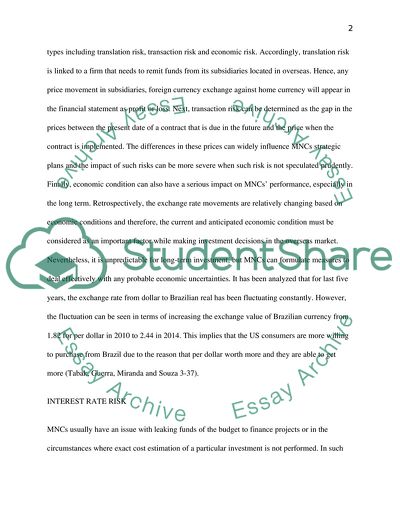Assessment financial risk in Brazil Essay Example | Topics and Well Written Essays - 750 words. https://studentshare.org/macro-microeconomics/1838856-assessment-financial-risk-in-brazil
Assessment Financial Risk in Brazil Essay Example | Topics and Well Written Essays - 750 Words. https://studentshare.org/macro-microeconomics/1838856-assessment-financial-risk-in-brazil.


